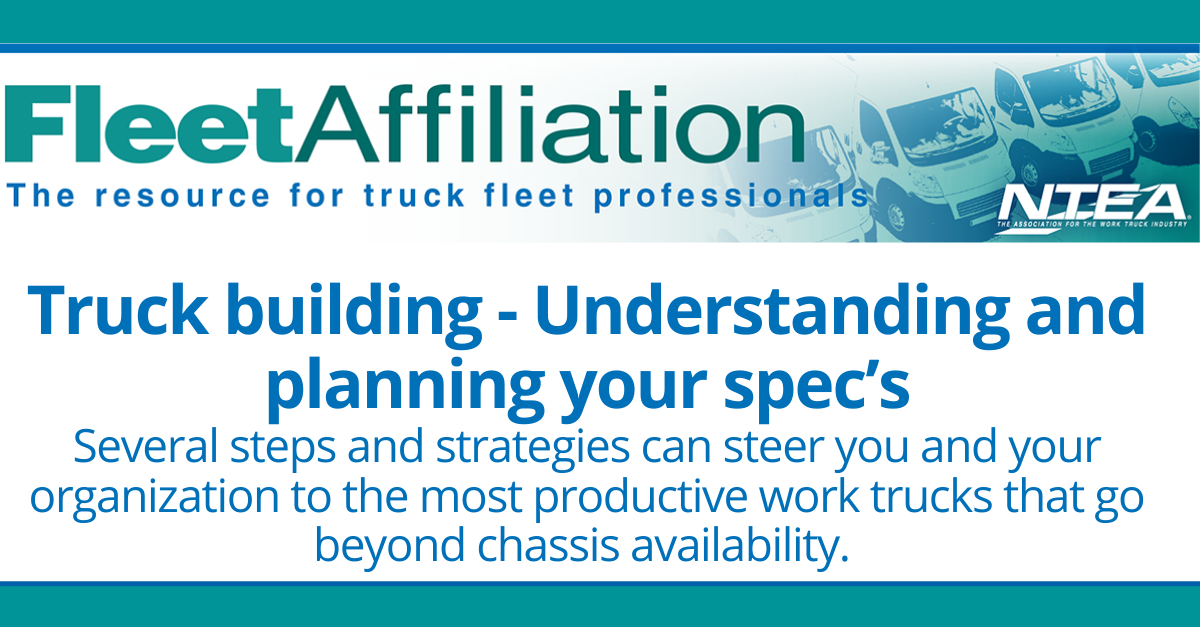 Published in August 2022 Fleet Affiliation.
Published in August 2022 Fleet Affiliation.
The approach of autumn often means vehicle order banks will begin to open. In the past, fleet purchasers commonly looked to past orders to fulfill future needs. In today’s climate, many fleets have already met or surpassed vehicle life cycle limits, and assets must be replaced. Today’s fleet management risks and challenges include 1) lost productivity due to potential operational changes as a result of shortened ordering windows, and 2) chassis availability. It’s important to meet these compressed timelines with a plan.
Several steps and strategies can steer you and your organization to the most productive work trucks that go beyond chassis availability.
- Your operations
The first step is to fully understand your organization's operations. Many organizations continue to expand and grow even during uncertain times, and it's often paired with changing needs. So when the time comes to replace trucks and equipment, it’s important to have a good understanding of how the units were and will be used. This presents an opportunity to really look at your drive and duty cycle. Your fleet data is also a valuable tool. Properly collected data can give you insight into truck design parameters.
- Your data
One of the most valuable fleet management assets is data – an understanding of what’s available and how to use it to inform decisions based on operational objectives. Data can illuminate:
- vehicle drive and duty cycle
- vehicle usage
- unnecessary breakdowns
- overall fleet efficiency
With this information, you can adjust vehicle design to meet organizational needs. As vocational trucks and equipment have continued to become more complex, it’s important to educate yourself on the new layers of available data and information.
Also, take a look at the global objectives of the organization and educate yourself, whether through a fleet management partner, manufacturing support, or fleet information system provider. Making data-driven decisions with good reliable data can benefit an organization beyond the bottom line.
It’s also crucial to understand when you have unreliable data, and then take corrective action. Failure to do so often results in costly outcomes. With this information, one can optimize vehicle maintenance (both preventive and predictive maintenance), optimize vehicle design and utilization, and right-size your fleet.
- Right-sizing
It’s often advantageous to go back to the drawing board. Start piecing together your drive and duty cycles, operational requirements, and design constraints. Normally, the term “right-sizing” carries the connotation of reducing or downsizing a fleet. Although you may have designed a vehicle with considerations to overall weight and capacity limits, make sure you’re not overloading individual components. Often smaller vehicles have more load on the front axles. Can upsizing actually downsize your fleet? If you’re making multiple loads with the same truck, you may be able to reduce some of your non-productive windshield time.
In the end, it’s all about right-sizing, so be sure you understand both the macro and micro constraints from a global perspective. While there is no perfect solution, especially in the current market conditions, getting close is a worthy goal.
